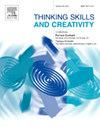A study on how novice mathematics teachers respond to high-potential instances of student mathematical thinking
IF 3.7
2区 教育学
Q1 Social Sciences
引用次数: 0
Abstract
This study explores how novice mathematics teachers (NMTs) respond to Mathematically Significant Pedagogical Opportunities to Build on Student Thinking (MOSTs)—critical classroom moments with high potential to enhance mathematical understanding—in middle school classrooms. Addressing the challenges faced by early-career teachers and understanding their instructional decisions and interactions with student mathematical thinking are crucial. Data were collected from five NMTs with less than five years of teaching experience through classroom observations and video recordings. The data were analyzed using the Teacher Response Coding Scheme (TRC), a framework that categorizes teacher responses according to three facets: who engages with the student thinking (actor), what instructional action is taken (move), and how the response connects to the student’s mathematical idea (recognition). The findings reveal that teachers predominantly positioned themselves as the main actors during interactions with student mathematical thinking, limiting student involvement and frequently relying on brief explanations such as literal, validating, or correct moves. However, the findings also indicate that more than half of the teacher responses incorporated student actions and ideas explicitly, showing an effort to honor and engage with student thinking.
初学数学教师如何回应学生数学思维的高潜力实例的研究
本研究探讨初学数学教师如何回应中学课堂中培养学生思维的数学重要教学机会(MOSTs),这是提高数学理解潜力的关键课堂时刻。解决早期职业教师面临的挑战,理解他们的教学决策以及与学生数学思维的互动是至关重要的。通过课堂观察和录像,从五位教学经验不足五年的nmt中收集数据。使用教师反应编码方案(TRC)对数据进行分析,该框架根据三个方面对教师的反应进行分类:谁参与了学生的思考(行动者),采取了什么教学行动(行动),以及反应如何与学生的数学概念联系起来(识别)。研究结果表明,在与学生数学思维的互动中,教师主要将自己定位为主要参与者,限制了学生的参与,并且经常依赖于简单的解释,如字面上的、验证的或正确的动作。然而,调查结果也表明,超过一半的教师回答明确地纳入了学生的行动和想法,显示出尊重和参与学生思考的努力。
本文章由计算机程序翻译,如有差异,请以英文原文为准。
求助全文
约1分钟内获得全文
求助全文
来源期刊

Thinking Skills and Creativity
EDUCATION & EDUCATIONAL RESEARCH-
CiteScore
6.40
自引率
16.20%
发文量
172
审稿时长
76 days
期刊介绍:
Thinking Skills and Creativity is a new journal providing a peer-reviewed forum for communication and debate for the community of researchers interested in teaching for thinking and creativity. Papers may represent a variety of theoretical perspectives and methodological approaches and may relate to any age level in a diversity of settings: formal and informal, education and work-based.
 求助内容:
求助内容: 应助结果提醒方式:
应助结果提醒方式:


